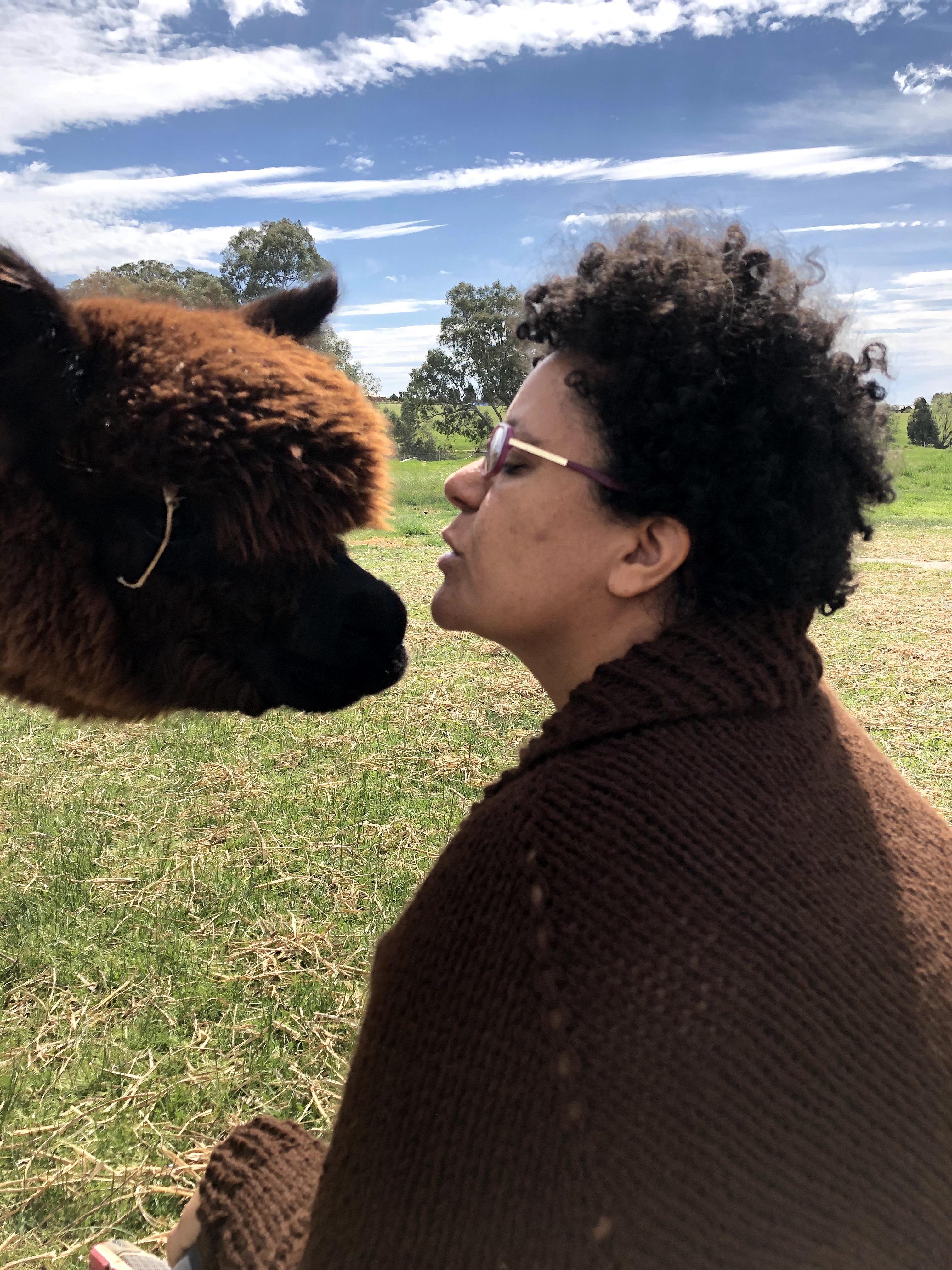The day I stopped labelling my alpacas
- Rita

- Apr 20
- 4 min read
Over the long weekend, I started my herd’s vitamin D supplementation. The whole process went smoothly and stress-free. But it hasn’t always been like this.

I used to get kicked. My partner would be dragged across the yard, clinging to an alpaca’s neck. Husbandry days were a nightmare. We thought we had the worst alpacas in the world.
In the alpaca world, it’s common to hear people blaming their animals for anything that doesn’t go to plan. Can’t load onto a float? “Stupid, dumb alpaca!” Kicking and rearing up at husbandry time? “Troublesome boy!” Won’t come to the handling area? “Stubborn, cunning alpaca!”
Labels are easy to apply. But they don’t help us understand our alpacas. And they certainly don’t help us find safer or kinder ways to support them.
A lesson from Omni
I remember the day Celene and Ryan came to my farm to practise some alpaca handling skills. We were giving the females a dose of mineral drench and checking their body condition. I was choosing the “calmer” alpacas for Celene and Ryan to work with (another label). Then it was Omni’s turn.
Omni is one of my tallest and strongest females. Anthony and I had always struggled to drench her. She’d lift her head, wrestle, rear up, and try to jump out of the pen. When it came time for Omni, Celene offered: “I’ll do it.”
Anthony and I looked at each other. “No, she’s a difficult alpaca,” we said.
But Celene, calm and steady, replied, “I’d like to give it a go.”
She gently held the drench gun, looked at Omni, and placed it in her mouth. No fight. No drama.
After that day, I told Anthony we had to stop calling Omni a difficult alpaca. I realised how much the label had been shaping our approach — and not in a good way. We would stiffen up, hold our breath, and expect the worst. And Omni, feeling our tension, would respond the only way she knew how: resistance.
We had unintentionally created a dynamic that made things harder for all of us.
I started trying a different approach. Instead of holding Omni’s neck tightly, I’d show her the drench gun first, press it gently to the side of her mouth, and insert it in the corner of her lips. It worked much better than our old “hold and force” method.

What if there’s a simpler way?
I’d become convinced that all my alpacas needed a monthly dose of mineral drench. It did them good — improving fleece, helping with skin issues, and boosting overall health. My drenching skills had improved, and I was using less force. But with some alpacas, I still struggled.
Sometimes the answer is so simple, we miss it.
I asked Marty McGee Bennett, the founder of Camelidynamics, how I could improve my drenching technique to reduce stress. She asked, “Can you add the liquid to their water trough?”
I said yes — but it would mean using more product. And she replied, “But you’ll stop fighting with your alpacas. They’ll still get the minerals.”
She was right. Since then, I’ve been adding the mineral liquid to their troughs. The water’s slightly tinged, and yes, I probably use a little more product. But the result? No struggling. No fighting. No stress.
Thinking like an alpaca
We need to see the world through our alpacas’ eyes. What causes their anxiety? What helps them stay calm? Doing things the same way over and over, hoping they’ll “get used to it”, rarely works. Instead, we can ask ourselves:
Is there an easier, less stressful way to do this?
Do we need to do it this way?
What if we add more alpacas to the pen?
What if we change the set-up?
Do we really need to do it at all?
When I visited a farm in England, they told me they don’t trim toenails outside of shearing time. Their secret? They’ve built rough concrete around their sheds and laneways. The alpacas walk on it daily, and their toenails wear down naturally.
Sometimes the solution is already there — we just need to notice it.

Stay curious, stay kind
Observe. Pay attention. See your alpacas the way you’d see children in a classroom — each with their own way of responding, learning, and thriving.
We’re all doing the best we can. The key is to stay curious and never stop learning.

Thinking about getting alpacas?
Come and meet the herd, ask all your questions, and learn what’s really involved in ethical, high-welfare alpaca ownership. Book a private farm visit to learn more.



